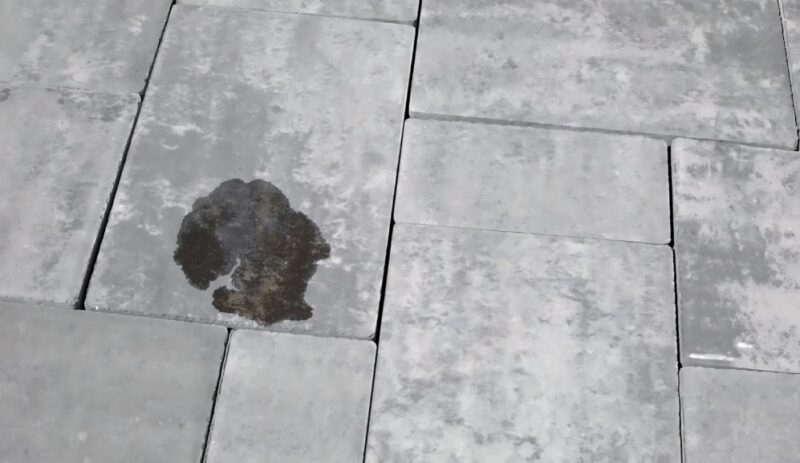Oil stains on concrete driveways and garages are something we’ve all dealt with. Whether it’s from a leaky car, lawn equipment, or that DIY project that went a bit sideways, oil can leave some pretty ugly marks. But with the right know-how and a few materials, you can get your concrete looking as good as new.
Cat litter method
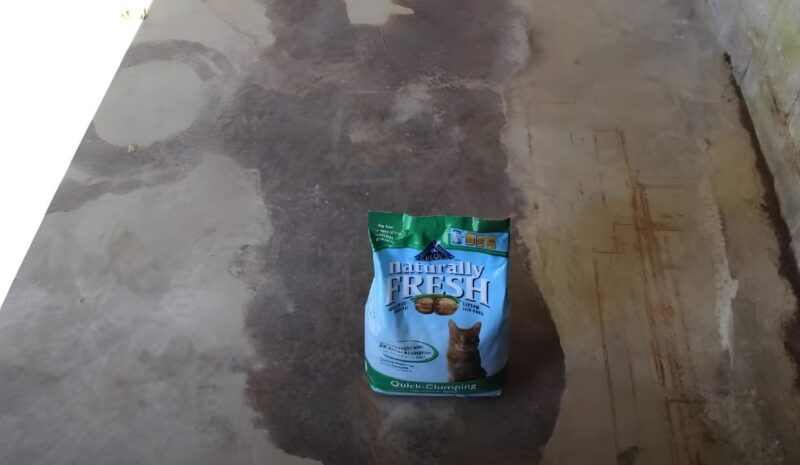
Cat litter is surprisingly effective at absorbing oil. Here’s how to use it:
- Spread a generous amount of cat litter over the oil stain. Make sure to cover the entire stain for maximum absorption. The litter will start absorbing the oil immediately.
- Allow the cat litter to sit on the stain for 24 hours. For fresh stains, this might be enough to absorb most of the oil. Patience is key here as the longer it sits, the more oil it will soak up.
- For older stains, you can use your foot to grind the cat litter into the stain to increase absorption. This helps break down the oil and ensures better penetration of the litter into the pores of the concrete.
- Sweep up the litter and dispose of it properly. Use a broom and dustpan to collect all the used litter. For best results, repeat the process if any oil residue remains.
Baking soda and dish soap
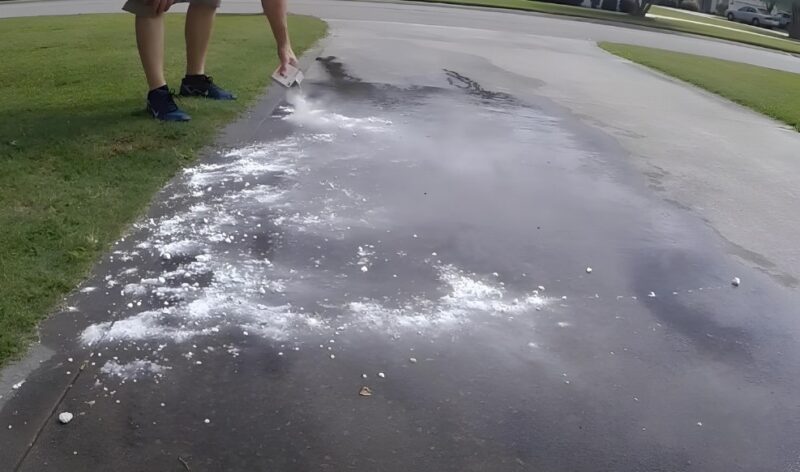
Step 1 – Apply baking soda
Sprinkle baking soda over the stain. The baking soda acts as an absorbent, drawing the oil out of the concrete. Ensure you cover the entire stained area for the best results.
Step 2 – Add dish soap
Pour dish soap over the baking soda and use a brush to scrub the mixture into the stain. The dish soap helps to break down the oil, making it easier for the baking soda to absorb.
Step 3 – Let it sit
Let the mixture sit for about 30 minutes. This allows the baking soda and dish soap to work on loosening and absorbing the oil from the concrete surface.
Step 4 – Rinse
Rinse the area with a hose. Repeat if necessary. Sometimes, multiple applications are required to fully remove stubborn stains.
Concrete degreasers
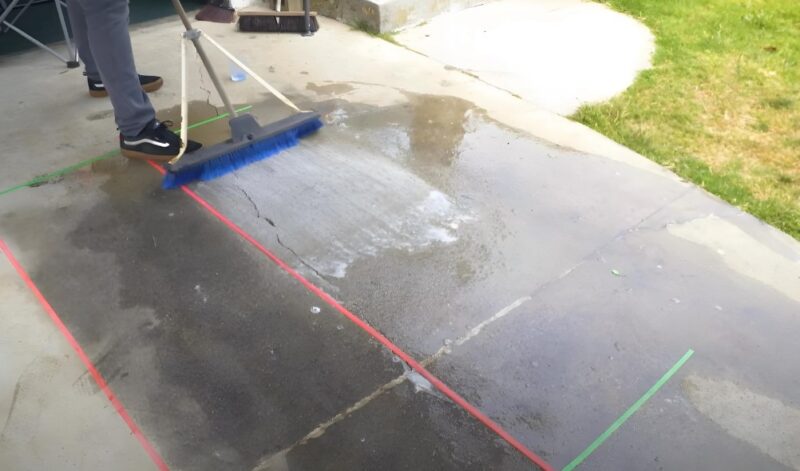
For tougher stains, concrete degreasers (also known as concrete cleaners) can be very effective.
- Follow the manufacturer’s instructions for mixing the degreaser. Each product may have specific guidelines for optimal use.
- Apply the degreaser to the stain. Make sure to cover the entire stained area thoroughly to ensure effective treatment.
- Use a stiff brush to scrub the degreaser into the concrete. This helps to break down the oil and lift it out of the concrete pores.
- Rinse the area with a hose or pressure washer. Ensure all residue is washed away to prevent re-staining.
Powdered laundry detergent
Sprinkle a generous amount of powdered laundry detergent on the stain. The detergent will act as an abrasive agent to lift the oil. Add a small amount of water to form a paste. Ensure the paste covers the entire stain for maximum effectiveness. Use a stiff brush to scrub the paste into the stain.
This action helps to break down the oil and absorb it into the detergent. Allow the paste to sit for 30 minutes. This gives the detergent time to work on the stain. Rinse the area thoroughly. You may need to repeat the process for very stubborn stains.
WD-40 method
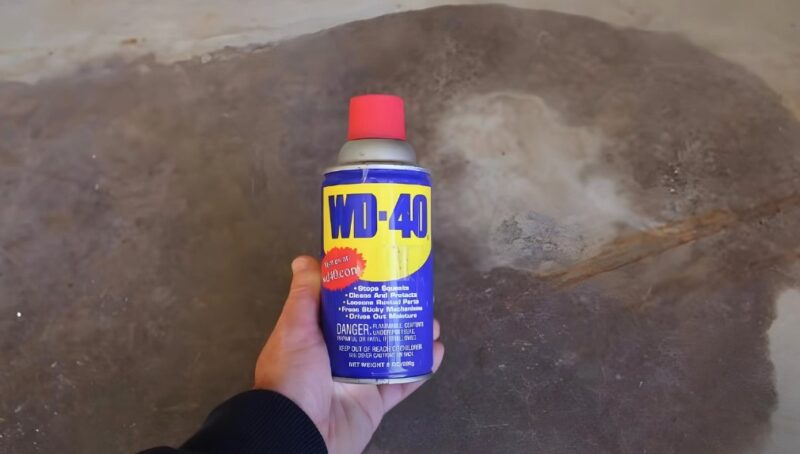
WD-40 can help break down oil stains, making them easier to clean.
- Spray WD-40: Spray a generous amount of WD-40 on the oil stain. Ensure the stain is thoroughly saturated with the WD-40.
- Let it sit: Allow it to sit for 30 minutes. The WD-40 will penetrate the stain and start breaking down the oil.
- Scrub: Scrub the area with a stiff brush. This helps to lift the oil from the concrete surface.
- Rinse: Rinse the area with water. Repeat if necessary for stubborn stains.
Poultice method
For particularly stubborn stains, a poultice can be effective. A poultice is a mixture that draws out the stain from the concrete. Mix an absorbent material (like baking soda) with a solvent (like acetone) to form a thick paste. The combination helps to break down and absorb the oil from the concrete. Apply the paste to the stain.
Ensure the stain is fully covered with the paste. Cover the paste with plastic wrap and let it sit for 24 hours. This allows the poultice to draw out the oil from the concrete. Remove the plastic and scrape away the dried paste. Use a putty knife or similar tool to remove all residue. Rinse the area thoroughly. Multiple applications may be necessary for deep stains.
Commercial concrete cleaners
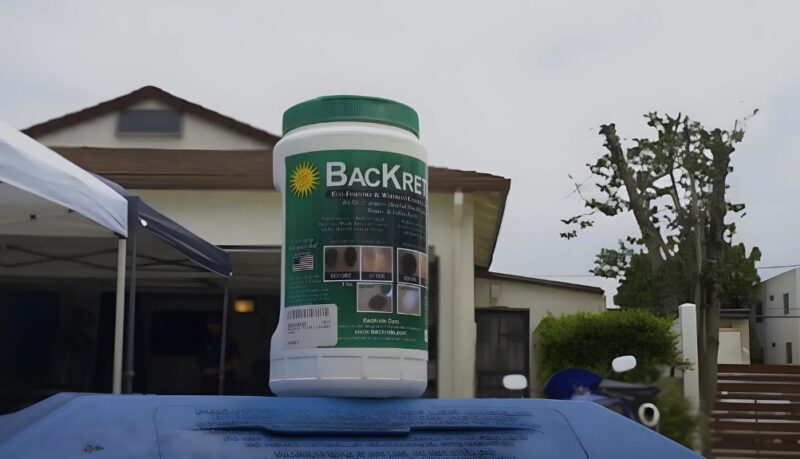
There are many commercial products specifically designed to remove oil stains from concrete. These products often contain powerful solvents and detergents. Carefully follow the instructions on the product label. Each product may have specific application methods.
- Apply the cleaner to the stain. Make sure to cover the entire stained area.
- Scrub the area with a stiff brush. This helps to break down the oil and lift it out of the concrete pores.
- Rinse the area with water. Ensure all cleaner residue is washed away to prevent re-staining.
Pressure washing
Pressure washing can be a highly effective method, especially for large areas or stubborn stains. Set up your pressure washer with a detergent suitable for concrete. Make sure to use the appropriate nozzle and pressure settings to avoid damaging the concrete.
Apply the detergent to the stain and let it sit for a few minutes. This helps to break down the oil. Use the pressure washer to clean the area. Be careful not to use too much pressure, as it can damage the concrete. Move the nozzle in a sweeping motion for even cleaning.
TSP (Trisodium Phosphate)
- Mix TSP: Mix Trisodium Phosphate with water according to the manufacturer’s instructions. Ensure you have the correct ratio for effective cleaning.
- Apply solution: Apply the solution to the stain. Make sure to cover the entire stained area.
- Scrub: Scrub the area with a stiff brush. This helps to break down the oil and lift it out of the concrete pores.
- Rinse: Rinse the area thoroughly. Ensure all TSP residue is washed away to prevent re-staining.
Baking soda and vinegar
Baking soda and vinegar create a fizzing reaction that can help lift stains. Sprinkle baking soda over the stain. The baking soda acts as an absorbent, drawing the oil out of the concrete. Pour vinegar over the baking soda and let it fizz. The chemical reaction helps to break down the oil. Use a brush to scrub the mixture into the stain.
This helps to lift the oil from the concrete surface. Rinse the area with water. Repeat if necessary for stubborn stains.
How to prevent oil stains
Place drip pans under vehicles or equipment prone to leaking oil. This can catch any leaks before they reach the concrete. Applying a concrete sealer can make it more resistant to stains. Sealers provide a protective barrier that prevents oil from penetrating the surface.
Address spills as soon as they happen to prevent the oil from seeping into the concrete. Prompt action can prevent stains from becoming stubborn and difficult to remove.
The bottom line
For getting oil stains off the concrete, you can use stuff you probably already have at home, like cat litter and baking soda, or go for commercial cleaners and a pressure washer. The key is to act fast and use the right method.

